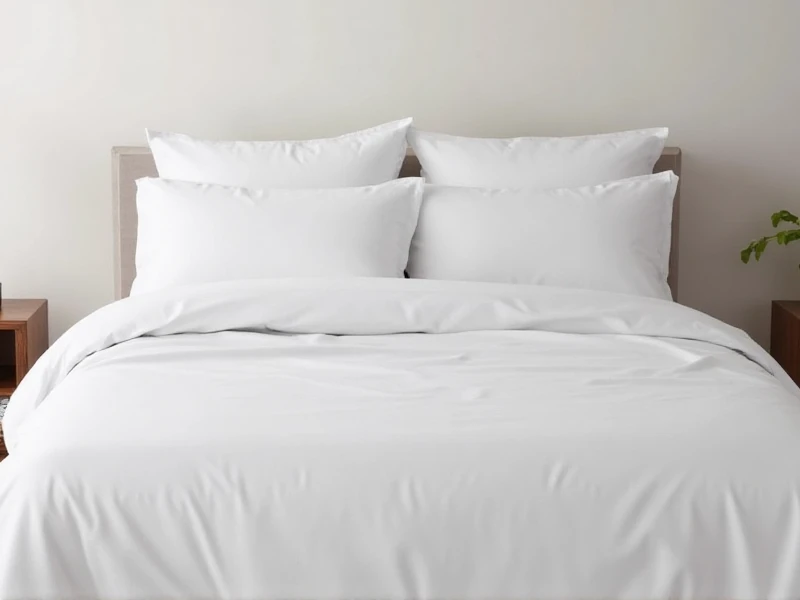Why Your Pillowcase Choice Matters More Than You Think
2025-06-07

SEO Article on Pillowcases
Ever toss and turn all night, only to wake up with a flat pillow and frizzy hair? Or battle mysterious forehead breakouts? Before blaming stress or hormones, consider the unsung hero (or villain) of your bedtime routine: your pillowcase. This often-overlooked piece of bedding significantly impacts sleep quality, skin health, hair condition, and even allergies. Choosing the right one isn't just about aesthetics; it's a crucial step towards better rest and overall well-being.
Beyond the Basics: Why Your Pillowcase Is Crucial
We spend roughly a third of our lives sleeping. During those precious hours, your face and hair are pressed against your pillowcase, making constant contact. The fabric's texture, breathability, absorbency, and cleanliness all play vital roles:
1. Skin Savior (or Saboteur): Rough fabrics like low-quality cotton can create friction, contributing to sleep lines and premature wrinkles over time. Non-breathable materials trap sweat, oils, and bacteria against your skin, potentially clogging pores and causing breakouts for acne-prone individuals. Conversely, smooth, gentle fabrics like silk or high-thread-count cotton can minimize friction and reduce irritation.
2. Hair Health Haven: Friction from standard cotton can lead to tangles, knots, and frustrating frizz, especially for dry, curly, or processed hair. Silk and satin pillowcases offer a slippery surface that reduces this drag, helping hair slide effortlessly, retain moisture, and prevent split ends and bedhead. Waking up with smoother, more manageable hair becomes a regular delight.
3. Hypoallergenic Hero: Dust mites thrive in bedding. For allergy sufferers, tightly woven, natural fiber pillowcases (like tightly woven cotton or bamboo) provide a better barrier against allergens. Hypoallergenic options are essential for sensitive skin and those prone to nighttime sniffles or congestion.
4. Comfort is Key: Temperature regulation matters during sleep. Breathable materials like pure cotton, linen, or bamboo allow air to circulate, wicking away moisture and preventing you from overheating. Finding a fabric that feels comfortable against your skin – cool, soft, smooth – significantly enhances sleep quality. Nobody sleeps well on a sweaty, scratchy surface.
The Fabric Showdown: Choosing Your Pillowcase Material
When browsing for pillowcases, the material is paramount. Let’s compare the top contenders:
1. Cotton: The classic choice. Benefits: Breathable, widely available, generally soft (especially long-staple options like Egyptian or Pima), relatively easy-care, durable. Drawbacks: Can wrinkle, less smooth than silk/satin, moisture-wicking varies based on weave (choose percale for crispness or sateen for silky feel).
2. Silk (Mulberry Silk): The luxurious favorite for skin and hair. Benefits: Incredibly smooth, minimizes friction dramatically, naturally hypoallergenic and dust-mite resistant, excellent temperature regulation (cool in summer, warm in winter). Drawbacks: Higher cost, requires gentle care (hand wash recommended or delicate cycle), can be less absorbent than cotton.
3. Satin (Often Polyester or Silk Blend): Offers a silk-like surface. Benefits: Very affordable, smoother than cotton reducing friction (good for hair/skin), easy-care and less likely to wrinkle than silk. Drawbacks: Often less breathable than cotton or natural silk (especially polyester satin), can feel synthetic or trap heat, less luxurious feel than true silk.
4. Bamboo: A rising eco-star. Benefits: Incredibly soft (often described as cashmere-like), naturally breathable and thermoregulating, moisture-wicking, inherently antibacterial and hypoallergenic, sustainable option. Drawbacks: Can sometimes wrinkle more, quality varies significantly (look for high bamboo viscose/lyocell content), care instructions can be specific.
5. Linen: The rustic charm champion of breathability. Benefits: Exceptional airflow, highly absorbent and moisture-wicking, becomes softer with each wash, naturally anti-static and antimicrobial. Drawbacks: Starts off crisp/stiff, prone to wrinkles (character of the fabric), higher price point for quality linen.
Choosing Your Perfect Pillowcase: Your Priority Checklist
Before clicking "Buy," consider your main priority:
Skin Concerned? Prioritize silk, satin (especially silk blend), or high thread-count sateen cotton for reduced friction and gentleness.
Tackling Hair Woes? Silk is the gold standard. Bamboo satin or polyester satin are effective budget-friendly alternatives.
Night Sweats/Hot Sleeper? Opt for breathable champions like linen, percale cotton, Tencel (from bamboo), or lightweight silk.
Allergies at Bay? Focus on natural fibers (cotton, bamboo, silk, linen) with tight weaves and/or certified hypoallergenic options. Wash bedding weekly!
Budget Conscious? Quality cotton percale or sateen, or polyester satin offer significant benefits without breaking the bank.
Simple Care for Big Impact
Regardless of your chosen material, maintaining your pillowcases is crucial:
Wash Weekly: This is non-negotiable for hygiene and skin health. Sweat, oils, dead skin cells, and bacteria accumulate fast.
Check Care Labels: Avoid bleach on silk, bamboo, and delicate fabrics. Gentle cycles and low heat drying (or air drying) extend life. Tumble dryer balls can help reduce wrinkles.
Have Multiple Sets: Makes weekly washing easy and keeps your bed visually appealing.
Transform Your Night, One Pillowcase at a Time
Don't underestimate the power of this simple bedding swap. Investing time in choosing the right pillowcases based on your specific needs is an investment in better sleep, healthier skin, more manageable hair, and overall comfort. Move beyond just matching your sheets and discover how changing your pillowcase can genuinely transform your rest and recovery. Sweet dreams start with the right foundation against your cheek. Ready to experience the difference? Explore high-quality options to find your perfect night's companion.
Category: